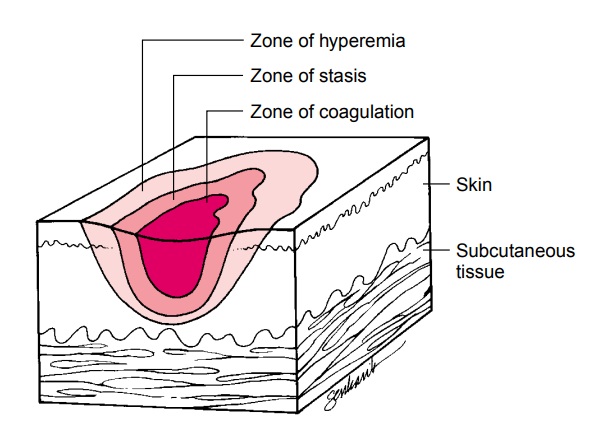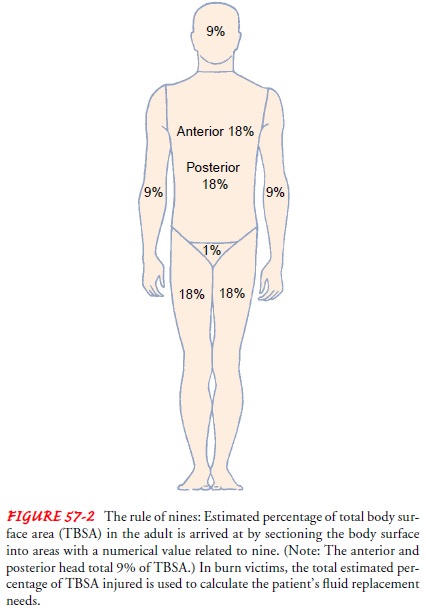Chapter: Medical Surgical Nursing: Management of Patients With Burn Injury
Classification of Burns

CLASSIFICATION OF BURNS
Burn
injuries are described according to the depth of the injury and the extent of
body surface area injured.
Burn Depth
Burns
are classified according to the depth of tissue destruction as superficial
partial-thickness injuries, deep partial-thickness injuries, or full-thickness
injuries. Burn depth determines whether epithe-lialization will occur.
Determining burn depth can be difficult even for the experienced burn care provider.
In
a superficial partial-thickness burn, the epidermis is de-stroyed or injured
and a portion of the dermis may be injured. The damaged skin may be painful and
appear red and dry, as in sunburn, or it may blister.
A
deep partial-thickness burn involves destruction of the epi-dermis and upper
layers of the dermis and injury to deeper por-tions of the dermis. The wound is
painful, appears red, and exudes fluid. Capillary refill follows tissue
blanching. Hair folli-cles remain intact. Deep partial-thickness burns take
longer to heal and are more likely to result in hypertrophic scars.
A full-thickness burn involves total destruction of epidermis and dermis and, in some cases, underlying tissue as well. Wound color ranges widely from white to red, brown, or black. The burned area is painless because nerve fibers are destroyed. The wound appears leathery; hair follicles and sweat glands are destroyed (Fig. 57-1).

The
following factors are considered in determining the depth of the burn:
·
How the injury occurred
·
Causative agent, such as flame
or scalding liquid
·
Temperature of the burning
agent
·
Duration of contact with the
agent
·
Thickness of the skin
Extent of Body Surface Area Injured
Various methods are used to estimate the TBSA affected by burns; among them are the rule of nines, the Lund and Browder method, and the palm method.
RULE OF NINES
An
estimation of the TBSA involved in a burn is simplified by using the rule of nines (Fig. 57-2). The rule of
nines is a quick way to calculate the extent of burns. The system assigns
percent-ages in multiples of nine to major body surfaces.

LUND AND BROWDER METHOD
A
more precise method of estimating the extent of a burn is the Lund and Browder
method, which recognizes that the percent-age of TBSA of various anatomic
parts, especially the head and legs, and changes with growth. By dividing the
body into very small areas and providing an estimate of the proportion of TBSA
accounted for by such body parts, one can obtain a reliable esti-mate of the
TBSA burned. The initial evaluation is made on the patient’s arrival at the
hospital and is revised on the second and third post-burn days because the
demarcation usually is not clear until then.
PALM METHOD
In
patients with scattered burns, a method to estimate the per-centage of burn is
the palm method. The size of the patient’s palm is approximately 1% of TBSA.
Related Topics